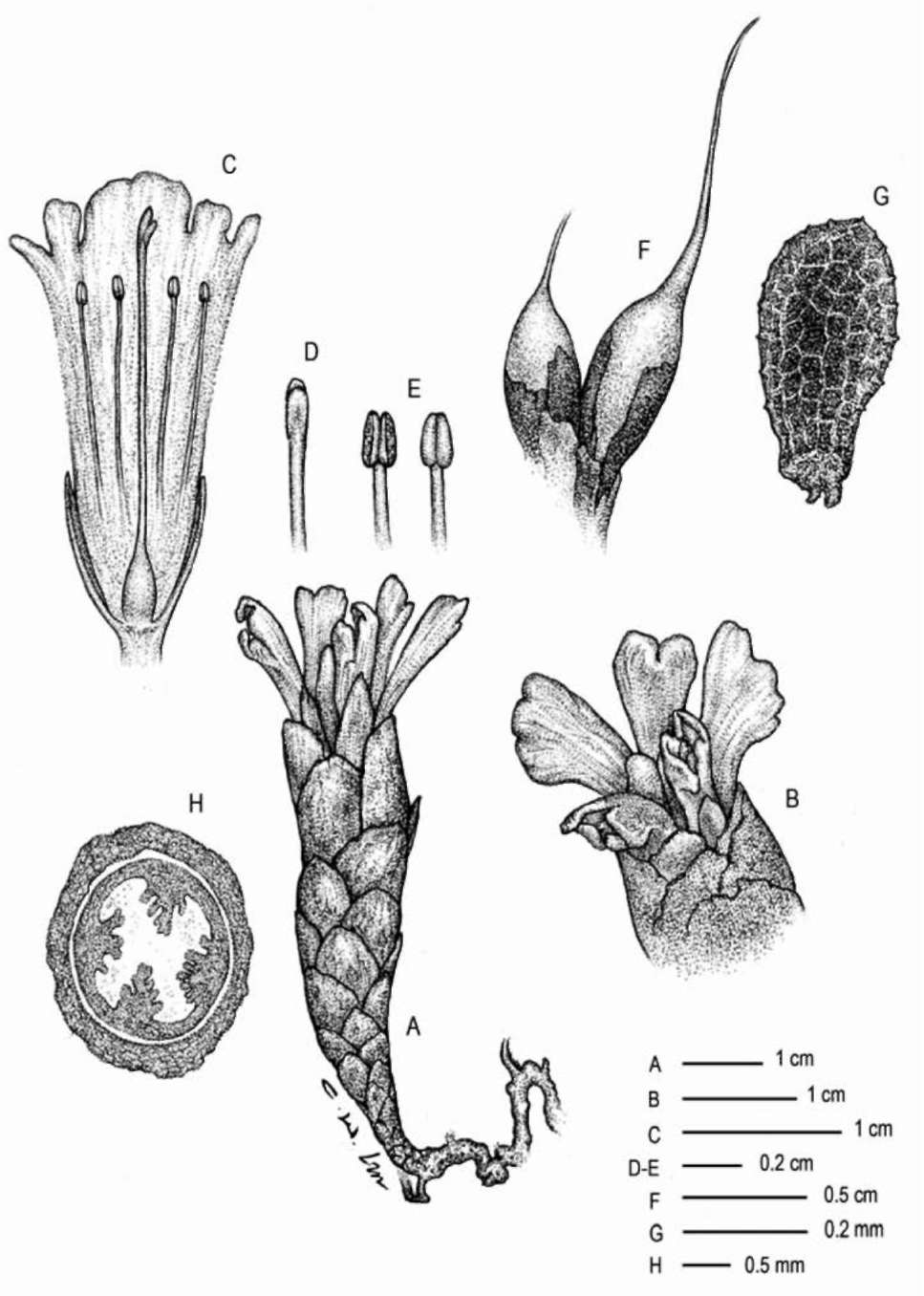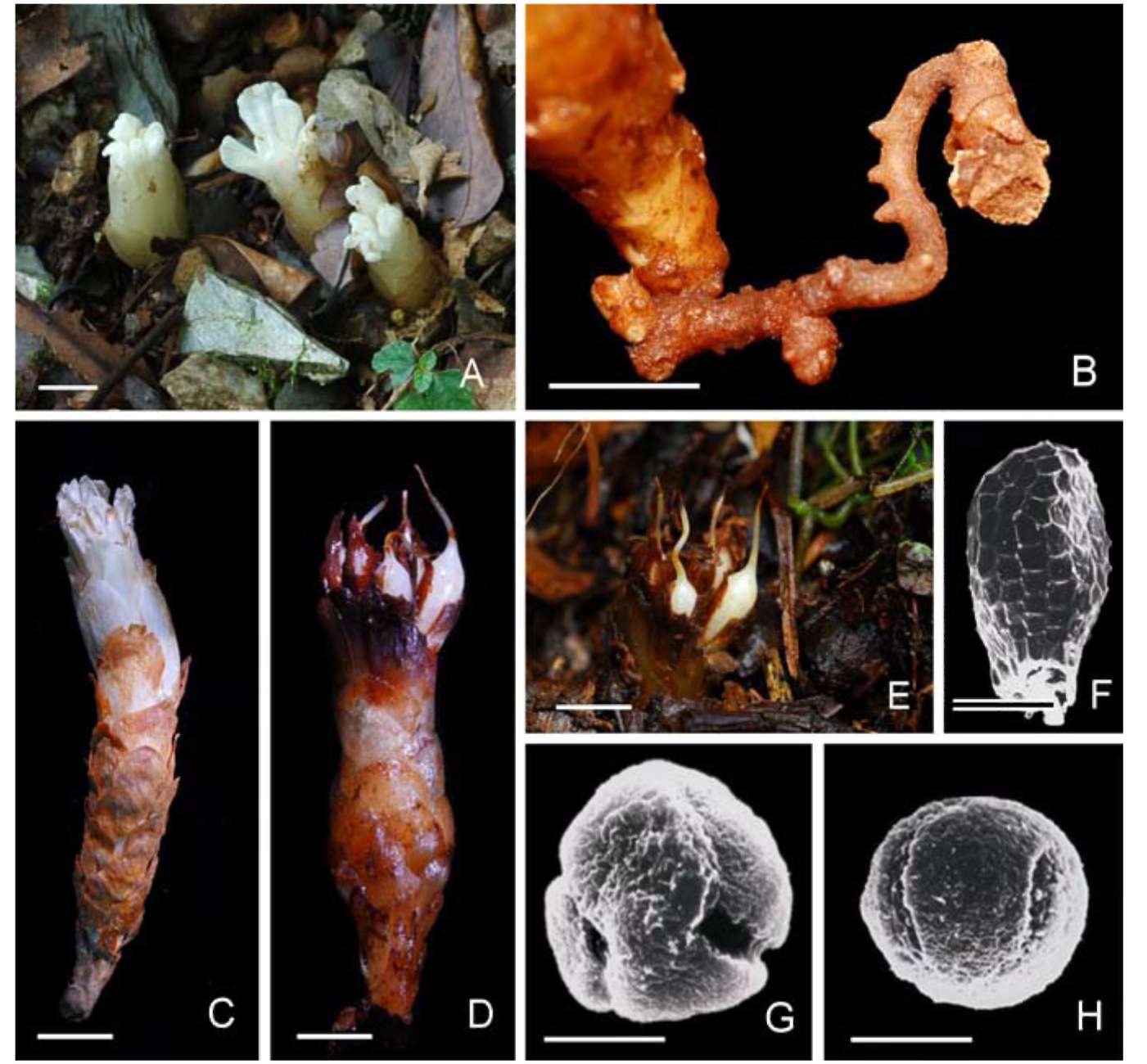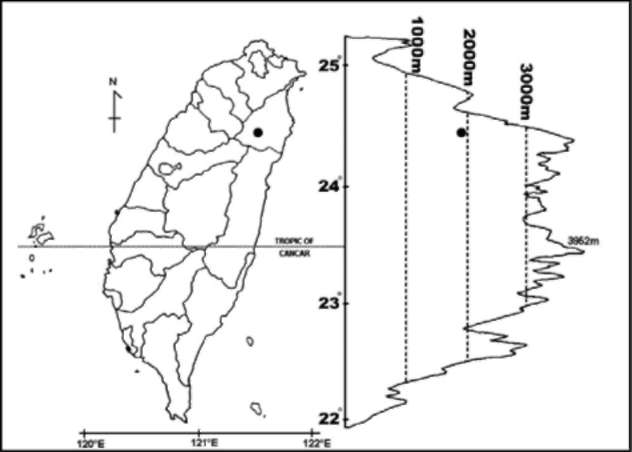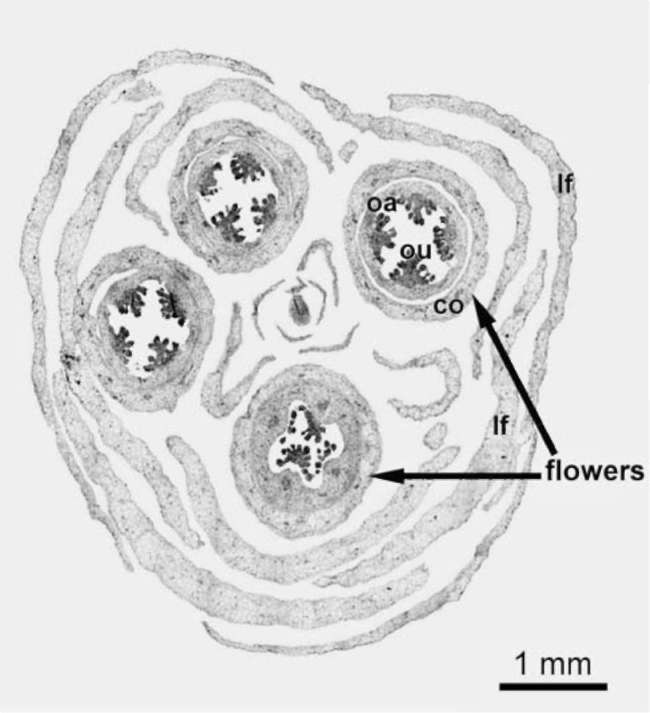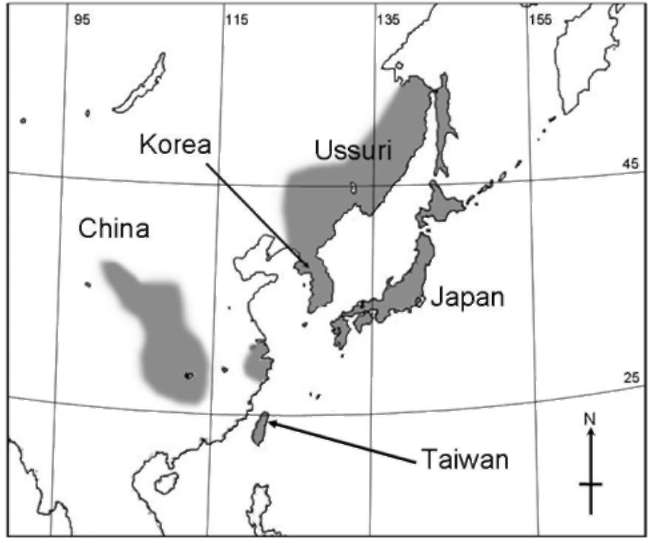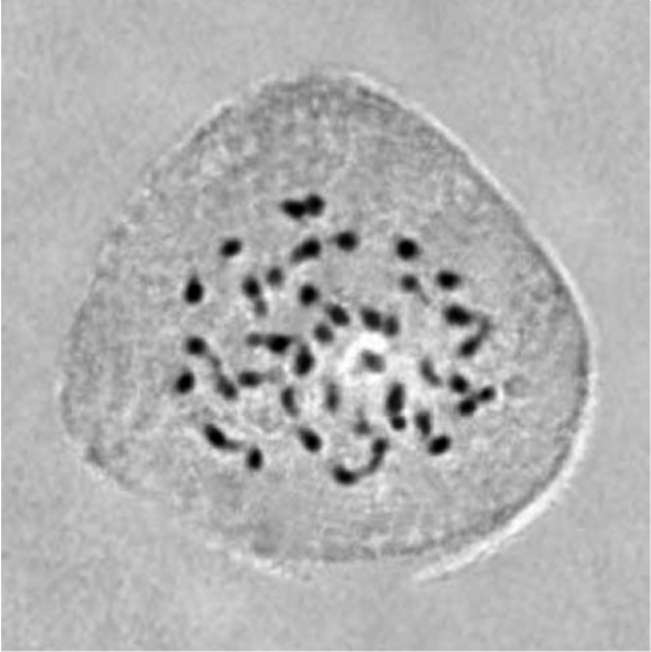Botanical Studies (2010) 51: 531-536.

Phacellanthus (Orobanchaceae), a newly recorded genus
in Taiwan
in Taiwan
Shih-Wen CHUNG1, Tian-Chuan HSU1, and Ching-I PENG2 *
1 Division of Forestry Biology, Taiwan Forestry Research Institute, 53 Nanhai Rd., Taipei 100, Taiwan
2Herbarium (HAST), Biodiversity Research Center, Academia Sinica, Nangang, Taipei 115, Taiwan
2Herbarium (HAST), Biodiversity Research Center, Academia Sinica, Nangang, Taipei 115, Taiwan
(Received January 10, 2009; Accepted April 22, 2010)
ABSTRACT. A heretofore unrecorded holoparasite Phacellanthus tubiflorus Siebold & Zucc. (Orobanchaceae) was recently discovered in Taiwan. It represents a new genus for the island and is distinguishable from related holoparasitic taxa such as Aeginetia, Christisonia, Boschniakia, and Orobanche by a combination of characters: stems with many scale-like leaves, inflorescence subcapitate or subcorymbose with 4-6 flowers, corolla white, and elongate, slender corolla-tube. Phacellanthus tubiflorus is rare on Taiwan, with no more than two dozen individuals occurring in the cloud zone of a mixed Chamaecyparis/broadleaved forest at 1,800-2,000 m elevation. This paper provides a taxonomic account of Phacellanthus and illustrations to aid in identification.
Keywords: Holoparasitic plant; New Record; Orobanchaceae; Phacellanthus tubiflorus; Rare plant; Taiwan.
INTRODUCTION
when the Flora of Taiwan (Yang and Lu, 1998; Boufford et al., 2003) was published. Since the completion of the six volumes of the Flora of Taiwan, 2nd edition, many additional genera, unknown from Taiwan at the time, have been discovered, e.g. Lomatogonium (Gentianaceae; Chen and Wang, 2000), Thismia (Burmanniaceae; Yang et al., 2002), Saccolabiopsis (Orchidaceae; Chung et al., 2006), Phryma (Phrymaceae; Jung et al., 2005), and Chikusichloa (Poaceae; Jung et al., 2007). Such discoveries provide evidence for the importance of sustained inventory in areas not easily accessible or rarely botanized.
Phacellanthus (Orobanchaceae) comprises a single ho-loparasitic species, P. tubiflorus Siebold & Zucc., distributed in eastern China, Japan, Korea, and Russia (Tuyama, 1947; Zhang and Tzvelev, 1998). During one of our recent botanical surveys, P. tubiflorus was discovered in the northern part of the Central Mountain Range in northeastern Taiwan. Our collection represents the first discovery for both the genus and species for Taiwan, and a southern range extension from Japan. We hereby provide a taxo-nomic account of this rare species, which was unknown
Key to holoparasitic species of Orobanchaceae in Taiwan
1. Calyx spathe-like; pedicels more than 5 cm long.......................................................................................Aeginetia indica
1. Calyx absent or 5-lobed, not spathe-like; pedicels less than 2 cm long.
2. Stems usually above ground; inflorescence spicate or racemose, borne well above soil surface.
3. Plants villose; lower lip of corolla subequal to upper lip; stamens included in corolla.......Orobanche coerulescens
3. Plants glabrous; lower lip of corolla much shorter than upper lip; stamens exserted from corolla.............................
................................................................................................................................................ Boschniakia himalaica
2. Stems usually underground; inflorescence subcapitate or subcorymbose, near soil surface.
4. Calyx absent; corolla tube 2.8-3.2 cm long, 2.5-3 mm across; fertile stamens 4..................Phacellanthus tubiflorus
4. Calyx lobes 5, persistent; corolla tube 4-6 cm long, 4-5 mm across; fertile stamens 2...............Christisonia hookeri
*Corresponding author: E-mail: bopeng@sinica.edu.tw.
